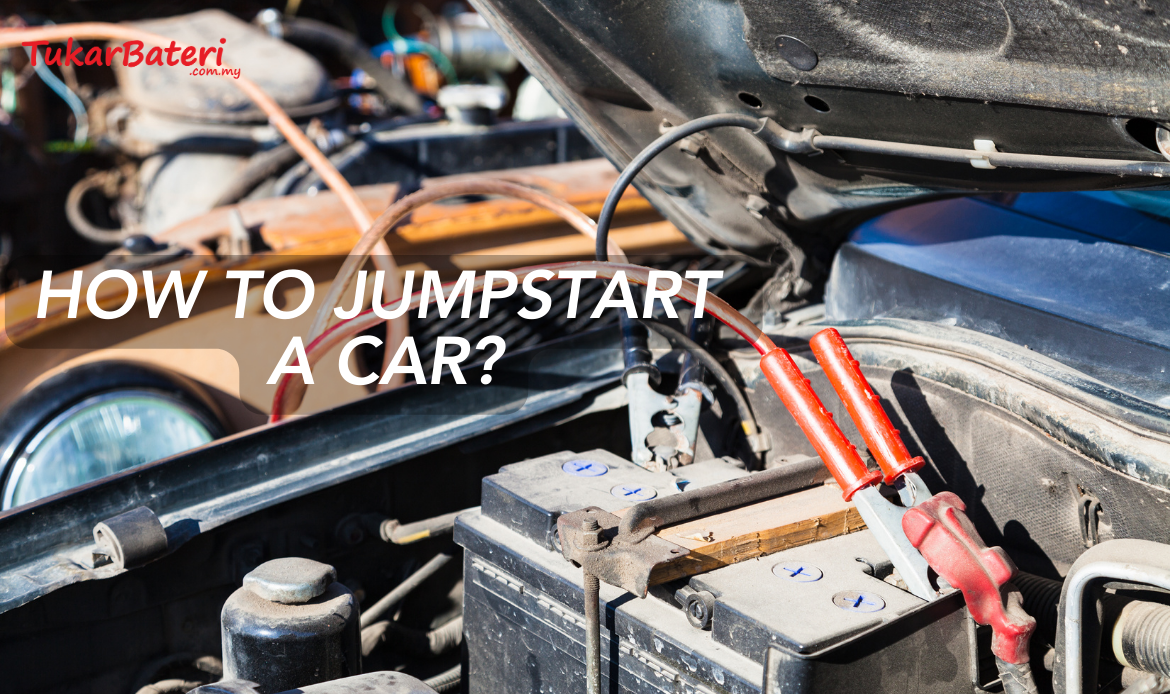Jump-starting a car is one of those essential skills every driver should have. Whether you’re stranded at the side of the road in Petaling Jaya or helping a friend whose battery died, knowing how to do it safely and efficiently can save you time, money and stress. In this in-depth guide you’ll learn why jump-starting works, what mistakes to avoid, and a clear, safe sequence of steps you can follow confidently.
Why your car won’t start?
Before you grab the jumper cables, it’s worth understanding what’s going on under the hood.
- A car battery provides the initial power needed to crank the engine. If it’s too weak (for example, due to age, frequent short drives, leaving lights on, or extreme heat/cold), the engine may not turn over.
- A jump-start simply uses another power source (another car’s battery or a portable booster) to give the dead battery enough charge to start the engine; once started, your car’s alternator will begin recharging the battery
- However — if the battery is physically damaged (leaking, cracked), or the problem is not the battery (starter motor, alternator, wiring fault) — a jump will only get you going temporarily (or may not work at all).
Key red flags before jump starting a car
- Battery pack looks cracked, swollen, leaking or corroded.
- Car has repeatedly needed jumps.
- Signs like very dim lights, clicking when you try to start, electrical accessories acting odd.
If any of those apply, you might need a battery replacement or professional diagnosis — rather than just a jump.
What you must check before you jump start a car
Jump-starting a car involves high current, flammable gases (especially from lead-acid batteries) and electrical systems, so safe practice is essential.
- Always wear gloves and eye protection if you have them.
- Make sure both vehicles are turned off, keys removed from ignition, all accessories (lights, radio, air-conditioning) switched off in both vehicles.
- Position the donor car and the “dead” car so that jumper cables can reach between batteries without the vehicles touching each other. Metal-to-metal contact can cause a short.
- Inspect the cables: they must be in good condition, insulated properly. Do not attempt if cables are frayed or damaged.
- Never smoke, have open flame or sparks near the batteries. Hydrogen gas from batteries is flammable.
- Consult your car’s owner manual. Some modern vehicles (especially those with advanced electronics, hybrid systems, or batteries under seats) may have special instructions, or jump-starting may be discouraged.
Step by step guide to jump start a car
1. Park & Get Ready
- Position both cars close enough for the cables to reach, but not touching.
- Put both vehicles in Park/Neutral, pull the handbrake, and turn both engines off.
- Switch off lights, air-cond, radio, and accessories.
- Open the bonnets and locate the battery terminals:
- Positive (+) usually has a red cap
- Negative (–) is usually black or bare metal
2. Connect the Jumper Cables
- Red → + on the dead battery
- Red → + on the donor battery
- Black → – on the donor battery
- Black → unpainted metal on the dead car
This grounding helps reduce sparks near the battery.
3. Start the Donor Car
- Start the donor vehicle and let it idle for 1–2 minutes.
- You may gently rev to around 1,500 rpm to help charge.
- Keep accessories off so the power focuses on charging.
4. Start the Dead Car
- Try starting the dead car.
- If it doesn’t start:
- Wait 30–60 seconds, then try again.
- Avoid cranking for more than 10 seconds per attempt.
- Once it starts, let both cars stay connected and running for 2–5 minutes
5. Disconnect in Reverse Order
- Black clamp from the dead car
- Black clamp from the donor car
- Red clamp from the donor car
- Red clamp from the dead car
Keep clamps from touching each other or metal surfaces.
6. Recharge the Battery
- Drive the revived car for 20–30 minutes (normal road is better than idling).
- If the car struggles to start again later, the battery may fail — or the alternator/starter could be the issue. Consider a check or replacement.
Common mistakes when jump starting a car & how to avoid them
| Mistake | Why it’s a problem | How to avoid it |
| Connecting cables in incorrect order | High risk of sparks, shorting, battery explosion | Follow the sequence above exactly |
| Using damaged/leaky battery or corroded terminals | Can cause chemical leak, explosion, failed jump | Inspect battery condition first; if it looks bad, call for help |
| Not turning off all accessories | Extra load reduces jump-effect and may damage electronics | Switch off radio, lights, A/C in both cars |
| Skipping grounding step (connecting black cable to negative terminal of dead battery) |
Sparks may occur near battery, risk of explosion | Always attach to a clean, bare metal point away from battery |
| Disconnecting cables while engine running | Can cause voltage spikes damaging sensitive electronics in modern cars | Shut off engines before removal |
| Driving only for short period after jump | Battery may not recharge fully → risk of flat again | Drive at least 15–30 minutes after jump |
Frequently Asked Questions
You should drive the car for 20–30 minutes after a successful jump start. Driving allows the alternator to properly recharge the battery.
- Connecting cables in the wrong order (can cause sparks or damage).
- Putting red/positive on the negative terminal by accident.
- Clamping the black cable to the dead battery’s negative terminal instead of a metal ground point.
- Letting the clamps touch each other while connected.
- Jump-starting with damaged, leaking, or swollen batteries.
- Jumping while engines or accessories are ON (lights, air-cond, radio).
- Using frayed or low-quality jumper cables.
- Revving aggressively or cranking the dead car nonstop.
Yes, but only if the car’s charging system is healthy. Once the engine is running, the alternator—not the battery—recharges the battery.
- No lights, no dashboard, no sound when you turn the key.
- Just a single click or no cranking at all.
- Remote lock/keyless entry doesn’t work.
- Interior lights dim or off when opening the door.
- Jump-start doesn’t help or the car dies immediately after starting.
Sometimes, but not always. A weak or drained battery (lights left on, short trips, weather) can usually be jump-started. But a battery that is truly dead — meaning damaged, swollen, leaking, or unable to hold charge — often won’t start even with a jump, or the car will die again soon after.
Need A New Car Battery?
Call Us Now!!!
Call Us Now!!!
Free Car Battery Delivery and Installation
We Cover:
Klang Valley | Penang | Terengganu | Johor | Kelantan | Malacca | Perak


